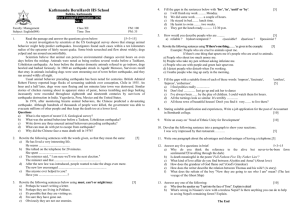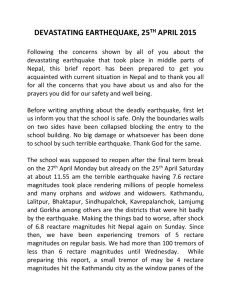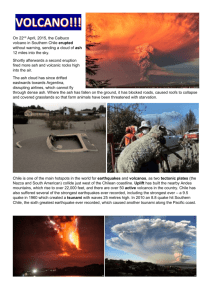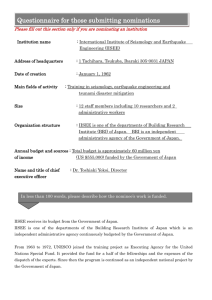Urban Risks of Kathmandu City - SAARC Disaster Management
advertisement
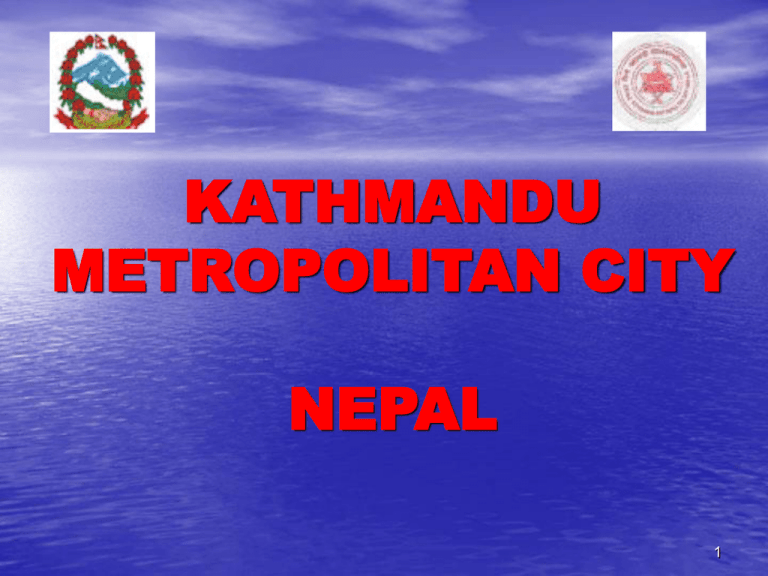
KATHMANDU METROPOLITAN CITY NEPAL 1 CITY PROFILE • Capital city of Nepal • Only metropolitan city of the country • Political, Cultural, Historical, Commercial Centre • Area – 5076.60 hectares • Population – 1 million (approx.) • Altitude – 1350 metres above sea level • 5 sectors and 35 wards • Prime values – Ancient Architecture and Cultural Tradition, Place of Worship 2 LOCATION OF KATHMANDU 3 SECTORAL MAP OF KATHMANDU 4 Urban Land Use, 1995 Land Use Area in ha. • • • • • 3,273.6 64.5 82.6 1.6 239.2 4.7 166.3 3.3 1,314.3 25.9 Mixed residential/commercial Commercial/Industrial Institutional Transport (airport/bus terminal) Others Total 5,076 % 100 5 ISSUES ON DISASTER Types of disasters – • Earthquake – high vulnerability Reasons- Lies in seismic zone - Concentration of development in Kathmandu - Rapid uncontrolled urbanisation • Flood – seldom in certain lowlands • Fire – high risk - Fire fighting difficult in city core areas because of difficult access (narrow lanes) 6 • The basement rock of Kathmandu is covered by a thick 500-meter, semi- consolidated layer of soil possessing high liquefaction potential. • Recurrence of disastrous earthquake very likely in the near future as according to previous assesments. • Probability of damage as deadly as the earthquake at Port-au-Prince, Haiti (2010) 7 EFFORTS OF KMC • Conducting public awareness campaigns on disasters and safety measures • Implementation of National Building Code for Earthquake Resistance in Building Permit Process since four years – - Mandatory Rule of Thumb for buildings below 3000 sq.ft. ( built up area) - Structural design / Analysis by qualified structural engineer for buildings exceeding 3 floors or 3000 sq.ft. built up area 8 • Conduct trainings on: - skilled workmanship for masons - engineers / architects on earthquake resistance construction technology • Co- ordination with - National Society for Earthquake Technology(NSET) - Earth and Megacities Initiative (EMI) for mainstreaming disaster risk reduction (DRR) by preparation of Risk Sensitive Land Use Plan ( RSLUP) 9 • This RSLUP is a ten-year guide (2010-2020) for realizing KMC’s desired spatial pattern of development, with due consideration to the city’s seismic risks, emergency response and disaster management capabilities, through different land use policies and urban renewal schemes • It follows the policies and principles on diaster risk management ( DRM) as stated by the Earthquake Disaster Mitigation in the Kathmandu Valley ( JICA 2002) 10 CHALLENGES ON URBANPLANNING IN KATHMANDU • The present development trend leading to haphazard growth or Horizontal Expansion of city • Encroachment on agricultural land and Open Spaces • Limited Urban Area ( defined boundary of surrounding mountains) • High consideration for earthquake resistance very essential in building construction 11 RECOMMENDATIONS • Vertical expansion in buildings with structurally safe construction • Revision of present Land Use Plan and corresponding Zoning Plan and Building Byelaws • Prevent encroachment on vacant lands for evacuation purposes / providing emergency camps during disasters 12 • Promote Land Pooling / Land Development projects • Develop river corridors as spaces for recreation and greenery for environmental protection • Promote Group Housing / Apartments to discourage fragmentation of land and uncontrolled horizontal expansion 13 THANK YOU 14


